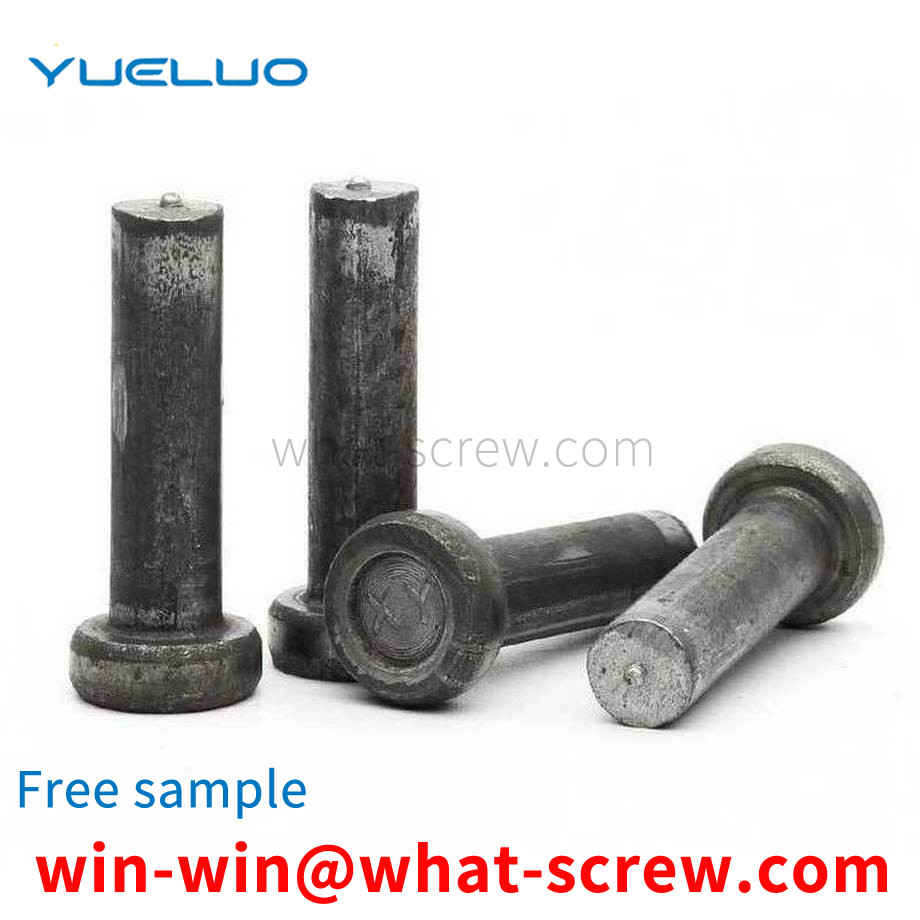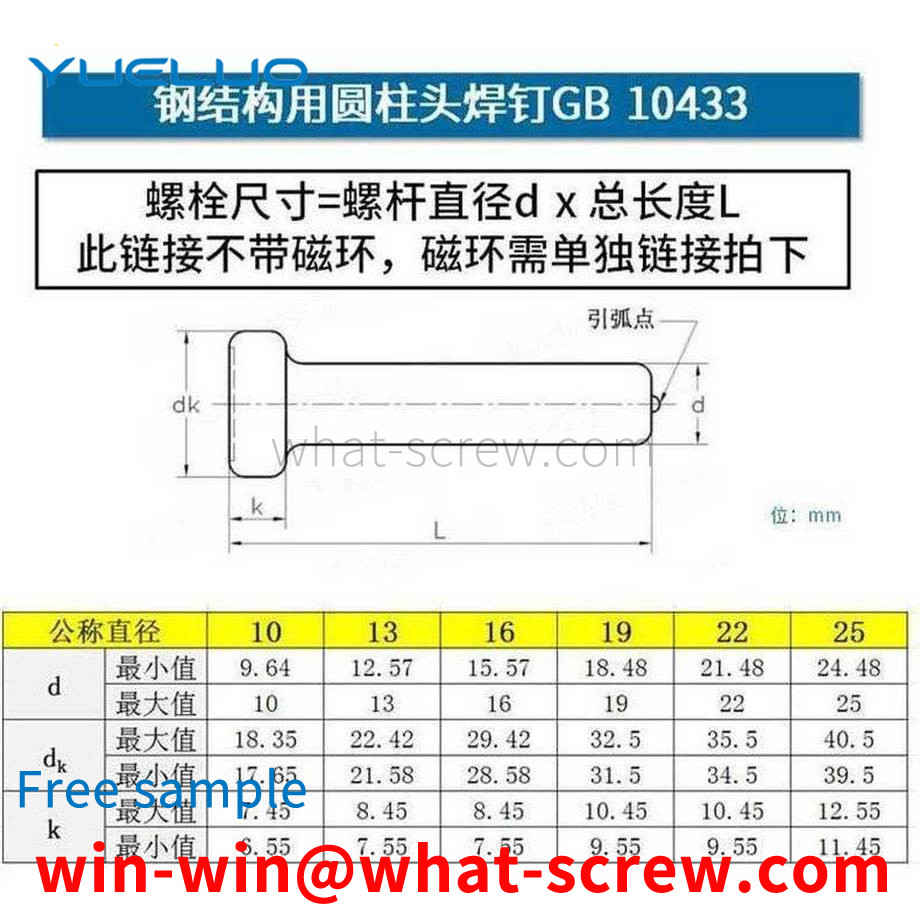In general, the size, mechanical properties and working performance requirements of self-tapping screws have the following standards: 1. Self-tapping screw size standard ASME B18.6.3 2010 standard not only introduces the dimensions of slotted and cross-recessed self-tapping screws and metal drive screws, but also includes the mechanical properties and work performance requirements of carbon steel self-tapping screws. The appendix gives instructions for measuring the various dimensions and application guidance on clamping lengths and test apertures. 2. Self-tapping screw performance standards (including mechanical properties and work performance): (1) SAE J933: Introduces the mechanical performance and work performance requirements of carbon steel ordinary self-tapping screws and white-cut self-tapping screws. The requirements for selection of raw materials, heat treatment, depth of carburized layer, surface hardness, and core hardness are further specified. (2) SAE J81: The mechanical properties and working performance of self-extrusion self-tapping screws (self-tapping locking screws) are introduced. (3) SAE J78: The mechanical properties and working properties of self-drilling and self-tapping screws are introduced. (4) IFl-113: The mechanical properties and working properties of self-drilling and self-tapping screws are introduced. (5) ASTM C1513: Introduces the mechanical properties and performance requirements of carbon steel self-tapping screws. For other special types of self-tapping screws, there is no corresponding national or industrial standard, and no data for self-tapping screws made of other metal materials other than carbon steel have been recognized. For technical data on these self-tapping screws, you can check with the manufacturer.
Yueluo Guangdong Yueluo Hardware Industry Co., Ltd. provides a rivet-oriented positioning riveting tool to overcome the shortcomings of the existing technology. The rivet is placed on the tool, and then placed in the riveting machine together with the product for riveting. In the same way, the scrap rate is reduced and the production efficiency is greatly improved. In order to achieve the above purpose, a rivet guide positioning riveting tool is designed, which includes a riveting positioning block and a riveting lower die, which is characterized in that a riveting positioning block is arranged above the riveting lower die. The riveting positioning block includes a positioning pin and a rivet yielding hole, a through hole is arranged in the center of the riveting positioning block, a rivet hole is arranged on one side of the through hole, and a number of positioning pins are arranged on the riveting positioning block around the through hole. . There are five positioning pins. The riveting lower die includes a countersunk head screw hole, a rivet guide block and a positioning hole. The riveting lower die is a stepped module. The left side of the riveting lower die is provided with a countersunk head screw hole, and the right side of the riveting lower die is provided with a countersunk head screw hole. The guide block is provided with several positioning holes on the riveting lower die located in front of the guide block. There are two positioning holes. The center of the guide block is provided with an escape hole. Compared with the existing technology, Guangdong Yueluo Hardware Industry Co., Ltd. has a rivet-oriented positioning riveting tooling. The rivets are placed on the tooling, and then placed in the riveting machine together with the product for riveting, which solves the problem of manual knock-in. The efficiency is low, and the riveting can be riveted without deviation without manual righting during riveting, so that the quality of the products produced is the same, the scrap rate is reduced, and the production efficiency is greatly improved.
The traditional fixture shown in Figure 2 is composed of a hardened support cylinder and a hardened shear bar, and has a simple structure. The cylindrical pin is loaded into the hardened support cylinder, and the shear test is completed by applying an axial load to the hardened shear bar. Since the standard stipulates that the gap between the loading part and the supporting part does not exceed 0.15mm, in order to ensure the matching of the gap during the shear test of the cylindrical pin, the diameter of the cylindrical pin on the cylinder is generally equal to the theoretical cylindrical pin. In practical application, the cylindrical pin is irregular in size after heat treatment. To realize the shear test, the cylindrical pin must be inserted into the hole with the help of external force, which is difficult to install and clamp and takes a long time. If the double-sided shearing is performed, that is If the cylindrical pins need to be installed on both sides, the time is doubled, and the notch of the cylindrical pins cannot be guaranteed to face upwards.
On the surface of the mounting hole on the connector, a 90-degree conical socket is machined, and the head of the flat machine screw is in the socket and is flush with the surface of the connector. Flat machine screws are also used in some occasions with semi-circle head flat machine screws, which are more beautiful and are used for places where a little protrusion is allowed on the surface. Screws play the role of connecting two or more objects and are an indispensable necessity in daily life or industrial manufacturing. There are countersunk head bolts (with grooves) and countersunk head bolts (with tenon).
Screws are a common fastener widely used in machinery, electrical appliances and buildings. The general material is metal or plastic, it is cylindrical, and the grooves engraved on the surface are called threads. Due to the different units of measurement, the representation methods of various threads are also different. For example, M16-2X60 represents a metric thread. His specific meaning is that the nominal diameter of the screw is 16MM, the pitch is 2MM, and the length is 60MM. Another example: 1/4—20X3/4 means the inch thread, what he specifically means is the nominal diameter of the screw It is 1/4 inch (one inch = 25.4MM), there are 20 teeth on one inch, and the length is 3/4 inch. In addition, if you want to express American screws, UNC and UNF are usually added to the back of the British screws to distinguish between American coarse teeth or American fine teeth.
We have many years of experience in the production and sales of screws, nuts, flat washers, etc. The main products are: chassis copper column, GB58 hexagonal slotted nut, Yueluo grand launch, GB96 washer and other products, we can provide you with suitable fasteners for you solution.



















 Service Hotline
Service Hotline




